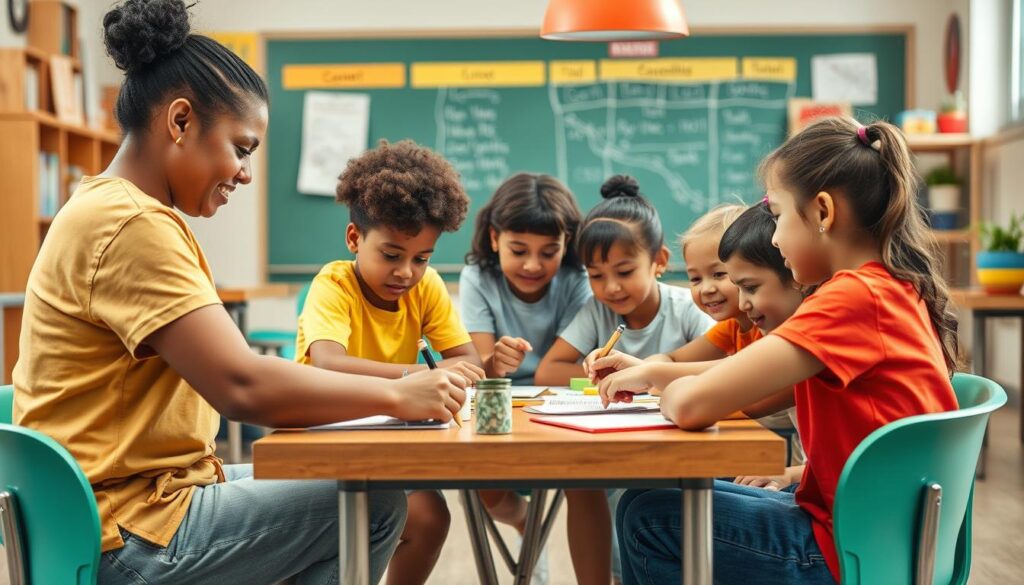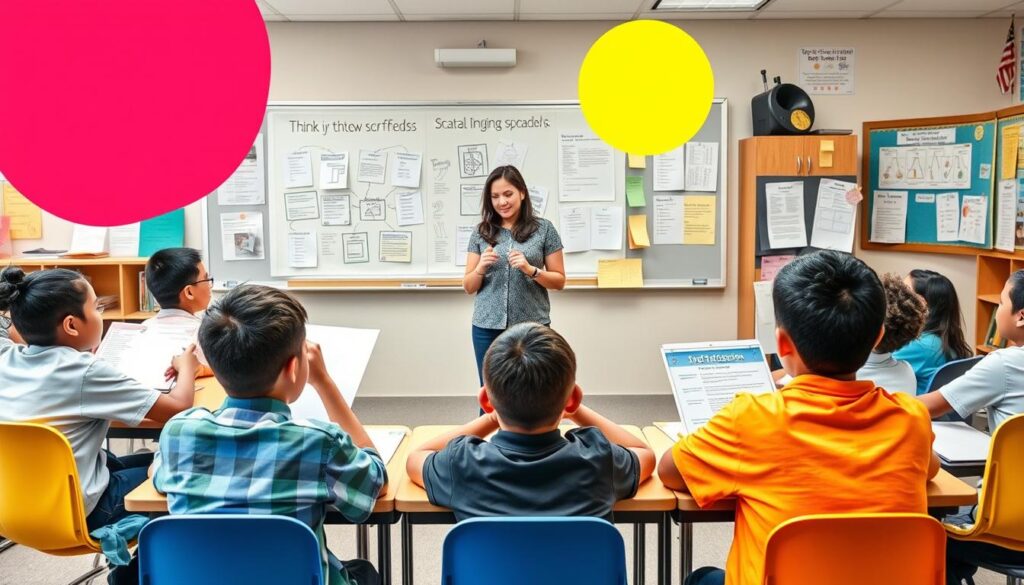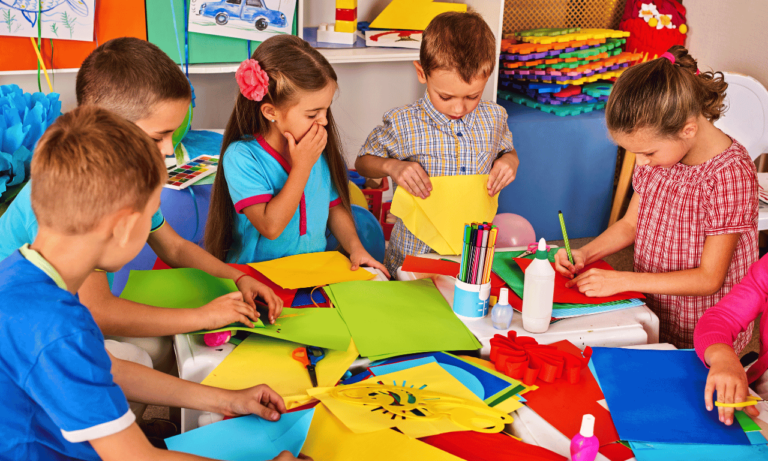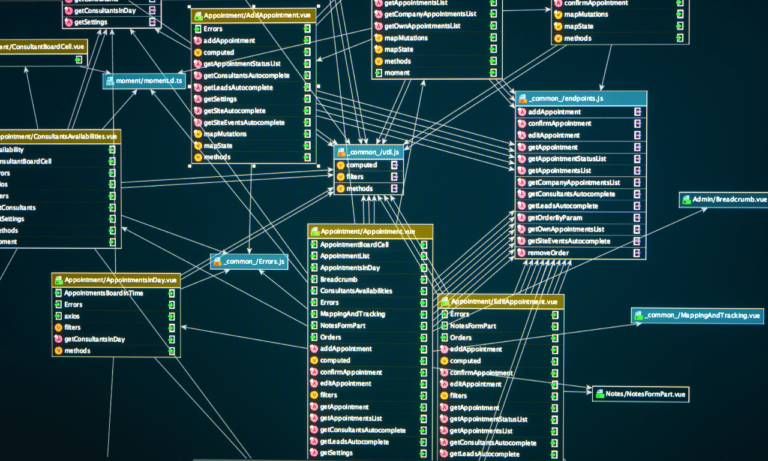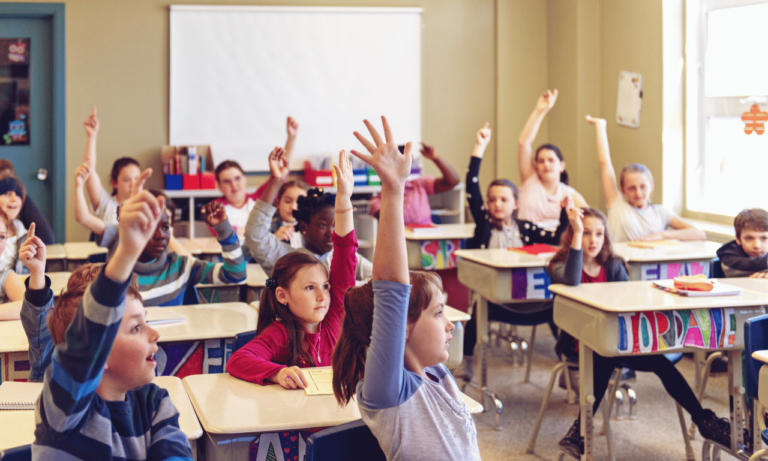Phone:
(+65)8319-0742
In education, scaffolding in teaching is a key method. It helps students learn and achieve more. Like real scaffolding helps workers, it gives students support to learn hard topics and new skills.
Teachers break lessons into parts and slowly take away support as students get better. This makes students do well and keeps them interested in learning. It also helps them connect new ideas with what they already know, making them love learning more.
Students learn better when they take part in their education and see how far they’ve come. This makes them feel more in charge of their learning. Scaffolding helps fill in gaps in learning, makes students less frustrated, and makes the classroom a positive place. Students feel supported and encouraged to try new things and ask for help when they need it.
This teaching method changes how students grow and learn. It helps teachers bring out the best in students. By using scaffolding, we help students succeed and make the future brighter for everyone.
Key Takeaways
- Scaffolding in teaching provides temporary support structures to assist students in mastering new concepts and skills.
- Gradual reduction of support as students gain proficiency fosters independence and autonomy.
- Scaffolding improves retention of new information and connects foundational knowledge to emerging concepts.
- Active engagement and progress tracking cultivate a passion for learning and a positive classroom atmosphere.
- Scaffolding bridges learning gaps, reduces frustration, and encourages students to take risks and seek help when needed.
Understanding Instructional Scaffolding
Instructional scaffolding is a teaching method that helps students reach their full learning potential. It uses temporary support structures to make learning easier. Teachers provide this support so students can overcome challenges and improve their skills.
Definition of Scaffolding in Education
In education, scaffolding means breaking down hard tasks into simpler steps. Teachers give guidance and support to help students move from where they are to where they want to be. It’s like the scaffolding in building that helps workers reach high places safely.
Temporary Support Structures for Student Learning
Good scaffolding uses support that meets each student’s needs. These supports can include:
- Modeling and demonstrating problem-solving strategies
- Providing clear instructions and guidelines
- Offering hints and prompts to guide student thinking
- Encouraging collaboration and peer support
- Gradually reducing assistance as students gain mastery
These supports help create a safe place for students to try new things, learn, and understand better.
Gradual Release of Responsibility
Instructional scaffolding is all about giving students more responsibility over time. This idea comes from Lev Vygotsky’s zone of proximal development. It says students learn best when they’re just a bit challenged, with the right help from teachers.
| Phase | Teacher Responsibility | Student Responsibility |
|---|---|---|
| I Do | 90% | 10% |
| We Do | 60% | 40% |
| You Do | 10% | 90% |
As students learn more, they take on more responsibility. This shift helps them become confident and independent learners.
By using scaffolding and giving students more responsibility, teachers can make learning focused on the students. This approach helps students grow, become resilient, and love learning. With the right support, every student can reach their highest potential.
Benefits of Scaffolding in the Classroom
Scaffolding in education, a concept from the 1970s by Jerome Bruner, has changed how teachers teach. It gives students a supportive learning environment. This lets students take part in their learning, making them feel in charge and proud of their progress.
Supportive Learning Environment
Scaffolding makes classrooms welcoming and inclusive. Students feel okay asking questions and sharing ideas. They help each other learn new things. This teamwork makes learning fun and encourages students to be curious.
Encouraging Active Learning
With scaffolding, teachers guide students step by step. They give clear instructions and slowly let students do more on their own. This way, students learn to think critically and solve problems by themselves.
“Scaffolding instruction is particularly essential for English language learners (ELLs), as it helps increase understanding by gradually building upon what students already know.”
Studies show that getting students involved in their learning with scaffolding helps them do better. For instance:
- Modeling and think-aloud strategies help ELLs grasp tough concepts
- Using what they already know makes learning more engaging and relevant
- Activities like Turn & Talk make the classroom more interactive
Promoting Student Ownership of Learning
When students get a clear plan and take part in learning, they feel they own their education. Techniques like differentiated instruction and knowledge scaffolding let them learn at their own speed. This reduces frustration and keeps them interested.
| Scaffolding Strategy | Benefit |
|---|---|
| Pre-teaching vocabulary | Helps ELLs tackle difficult texts |
| Visual aids | Contextualizes information and builds upon prior knowledge |
| Mini-lessons and journal entries | Identifies learning gaps and activates prior knowledge |
| Games and hands-on practice | Guides students in problem-solving and understanding |
By offering support and scaffolding that meets students’ needs, teachers help them succeed. As students become more confident, the support is slowly removed. This lets them learn on their own, becoming independent learners.
Implementing Scaffolding Strategies
Educators can inspire student growth by using scaffolding strategies. They provide support and guidance to help students reach their full potential. This creates a learning environment that encourages active engagement and critical thinking.
Modeling and Think-Alouds
Modeling is a great way to scaffold learning. Teachers show how to do new or hard tasks. For example, they might use a graphic organizer and think aloud to explain its benefits.
This helps students see the process and its value in organizing complex ideas.
Collaborative Learning
Collaborative learning boosts student engagement and confidence. After showing how to do a task, teachers and students work together. Students share ideas and fill in a graphic organizer.
This teamwork lets students learn from each other and feel part of a community. Companies like Universal Manufacturing know how crucial teamwork is for success. They offer scaffolding solutions for different projects.
Guided Practice and Independent Practice
Students move from guided to independent practice as they learn. In guided practice, they work with others to understand and improve. Then, they do it on their own in independent practice.
“Scaffolding is not a one-size-fits-all approach. It requires careful planning, monitoring, and adjustment to ensure that each student receives the support they need to succeed.”
To use scaffolding well, teachers should:
- Pick tasks that match the curriculum and students’ needs
- Look at students’ backgrounds and what they know
- Use different supports as students learn more
- Encourage students and ask questions to keep them on track
- Check progress with feedback and assessments
- Make the classroom welcoming and supportive
- Help students rely less on support over time
By using these strategies, teachers can help students grow, gain confidence, and love learning. This will help them long after they leave school.
Types of Instructional Scaffolds
Educators have many tools to help students learn new things. These tools make learning easier and help everyone grow. Let’s look at some top scaffolding methods.
Advance Organizers
Advance organizers are great for starting new lessons. They give students a clear plan for what to learn. Teachers use tools like Venn diagrams and outlines to help students connect new info with what they know.
Visual Aids and Graphic Organizers
Visual aids and graphic organizers help students see and understand complex ideas. Teachers use gestures and diagrams to make information clear. Graphic organizers like concept maps help students organize their thoughts.
Questioning Techniques and Prompts
Good questions and prompts are key to scaffolding. They help students use what they know and think deeply. Techniques like “think-pair-share” make learning together better.
Scaffolding is not a one-size-fits-all approach; it requires educators to be responsive to individual student needs and adapt their support accordingly.
Tools like cue cards and stories help students think and share ideas. Pre-teaching and using sentence stems make writing easier. These strategies help students do well.
Using different scaffolds, like advance organizers and graphic organizers, teachers make learning fun and supportive. This helps students take charge of their learning and succeed. As students get better, teachers slowly step back, letting them learn on their own with help when needed.
This method, known as the “I do, we do, you do” approach, is key to scaffolding in schools. It helps students learn and grow.
In the construction world, new scaffold technology is changing the game. It focuses on safety and making work faster. New materials and tools are changing how scaffolds are used in building projects, just like in the classroom.
Conclusion
Scaffolding is a key way for teachers to make hard topics easier for students. It gives them support to learn more. By using methods like modeling and working together, teachers help students take charge of their learning.
This approach has many benefits. Students understand better, work harder, and get more involved. Teachers help students grow by giving them tasks they can handle. This builds their confidence and skills for harder challenges.
Starting scaffolding takes some work, but the benefits are huge for both students and teachers. It helps students reach their best potential. By using scaffolding, teachers can make sure every student has a chance to succeed.


